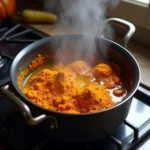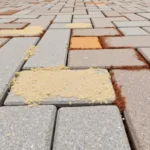Triadic colors are one of the most vibrant and dynamic color schemes you can use, whether you’re painting a room, designing a website, or choosing an outfit. They offer a balanced yet exciting combination that’s sure to make a statement. Let’s dive into the world of triadic colors and explore how to use them effectively.
Understanding the Triadic Color Harmony
Triadic colors are formed by selecting three colors that are evenly spaced on the 12-spoke color wheel. This creates a triangle, with each point representing a chosen color. This equal spacing ensures a high degree of contrast while maintaining balance and harmony.
Think of the primary colors: red, blue, and yellow. These form a classic triadic color scheme. Other examples include secondary triadic colors (green, orange, and violet) and tertiary triadic colors like red-orange, yellow-green, and blue-violet. The possibilities are endless!
Why Choose Triadic Colors?
Triadic color schemes are inherently visually stimulating and offer a rich, diverse palette. They’re a great choice if you want to create a space that feels energetic and lively. what is a triadic color scheme
- High Contrast: Triadic colors offer a strong contrast, making them ideal for grabbing attention.
- Balanced Harmony: Despite the contrast, the even spacing on the color wheel ensures a sense of balance.
- Versatility: Triadic colors can be adapted to suit a variety of moods and styles, from bold and playful to sophisticated and elegant.
How to Use Triadic Colors in Your Design
While the vibrant nature of triadic colors is exciting, it’s important to use them thoughtfully to avoid overwhelming the eye. Here are some tips:
- Choose a Dominant Color: Select one color to be the dominant hue, using the other two as accents. This helps to ground the scheme and prevent it from feeling too chaotic.
- Vary Saturation and Value: Experiment with different shades, tints, and tones of your chosen colors. This adds depth and complexity to the palette. For example, pair a deep, rich red with a lighter, pastel blue and a muted yellow.
- Consider the Context: Think about the overall mood and purpose of your design. A bright, primary triadic scheme might be perfect for a children’s playroom, while a more subdued tertiary scheme might be better suited for a living room. how to paint room two colors
Examples of Triadic Colors in Action
Triadic color schemes can be found everywhere, from famous artwork to everyday objects. Think of the bold, primary colors used in Piet Mondrian’s paintings or the vibrant hues of a tropical bird. what is triadic colors
- Fashion: Triadic colors can create stunning outfits, pairing colors like teal, orange, and violet for a striking look. what colors go with teal clothing
- Graphic Design: Logos and websites often utilize triadic color schemes to create a memorable visual identity.
- Digital Art: Triadic colors can add energy and vibrancy to digital illustrations and designs. how to change colors in procreate
“Triadic color palettes are a secret weapon for designers. They allow you to create a dynamic and visually arresting composition without sacrificing harmony,” says renowned color consultant, Anya Sharma.
Conclusion
Triadic colors provide a powerful tool for creating engaging and visually appealing designs. By understanding how to balance these vibrant hues, you can unlock their full potential and bring your creative vision to life. Whether you’re painting a wall, designing a logo, or choosing an outfit, triadic colors offer a world of possibilities.
FAQ
- What are the benefits of using a triadic color scheme? Triadic colors are vibrant, balanced, and offer high contrast, making them ideal for attracting attention.
- How do I choose the right triadic colors? Use a color wheel to select three colors evenly spaced apart.
- Can triadic colors be used in any design? Yes, but consider the context and adjust the saturation and value to suit the mood.
- What’s the difference between triadic and complementary colors? Triadic colors involve three hues, while complementary colors use two hues opposite each other on the color wheel.
- Are primary colors always a triadic scheme? Yes, red, yellow, and blue form the classic primary triadic color scheme.
6.. How can I soften the impact of a triadic color scheme? Use tints, tones, and shades to create a more subdued effect. - Where can I find more inspiration for triadic color palettes? Explore nature, art, and design resources for inspiration.
Need Help with Your Color Choices?
Contact us! Phone: 0373298888, Email: [email protected]. Visit us at 86 Cầu Giấy, Hà Nội. We have a 24/7 customer service team.

